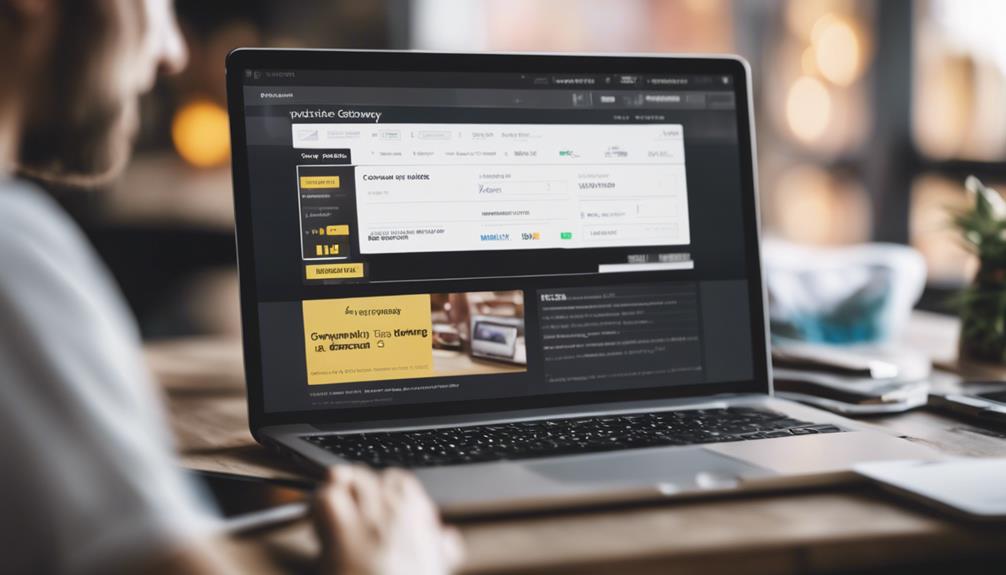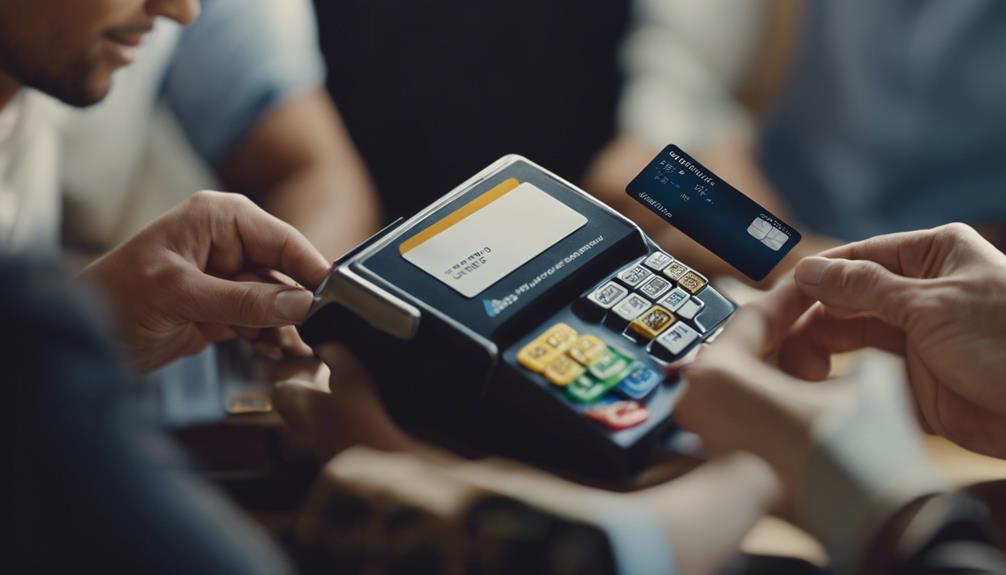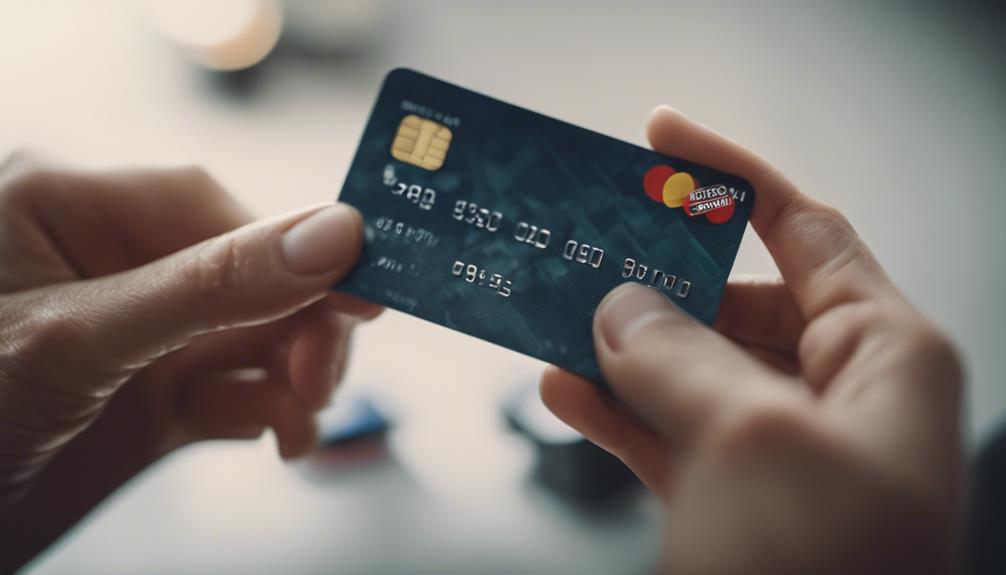When integrating payment gateways, start by choosing a provider with reasonable fees and a good reputation. Set up your merchant account by providing business details and agreeing to terms. Obtain API credentials, distinguishing between public and secret keys for different operations. Customize gateway settings, select currencies, and guarantee security. Integrate the gateway into your website with plugins or code for a smooth customer experience. Test transactions in a sandbox, check for compatibility, and prioritize security. Monitor transactions post-launch for optimizations. Following these steps guarantees a secure and efficient payment process for your business.
Key Takeaways
- Select a reputable payment gateway provider based on transaction fees, setup costs, and supported payment methods.
- Set up a merchant account by providing business details, undergoing verification, and agreeing to payment terms.
- Obtain API credentials from the provider, distinguish between public and secret keys, and use them accordingly.
- Configure gateway settings by customizing payment methods, selecting currencies, and enhancing security.
- Integrate the gateway to your website for seamless online transactions, ensuring data security and customer trust.
Selecting a Payment Gateway Provider

When selecting a payment gateway provider for your business, prioritize factors like transaction fees, setup costs, and supported payment methods. It's essential to choose a provider that offers competitive transaction fees to guarantee cost-effectiveness in processing payments.
Additionally, consider the setup costs involved in integrating the payment gateway with your e-commerce platform for a seamless checkout experience. Look for providers that support a wide range of payment methods to cater to diverse customer preferences and enhance user experience.
Security features are paramount when evaluating payment gateway providers. Make sure that the provider complies with industry standards like PCI DSS and employs robust encryption technologies to safeguard sensitive payment information.
Customer satisfaction is also key – research the provider's reputation, reliability, and customer support to guarantee a smooth integration process and reliable service for your business. By prioritizing these factors, you can select a payment gateway provider that meets your business needs effectively.
Setting Up a Merchant Account

To establish a merchant account for your business, you'll need to provide necessary business details, undergo a verification process, and agree to payment processing terms. A merchant account functions as a specialized bank account enabling businesses to accept credit or debit card payments securely. This account holds funds from customer transactions before transferring them to your main business bank account.
Essential for online businesses, a merchant account allows you to process electronic payments efficiently. When setting up a merchant account, you must offer relevant business information, undergo required verification, and accept payment processing terms. Various fees are typically associated with merchant accounts, including transaction fees, monthly fees, and chargeback fees. These fees vary depending on the payment processing solutions provider and the nature of your business.
Understanding and agreeing to the payment processing terms is vital for smooth and transparent financial transactions.
Obtaining API Credentials

When obtaining API credentials for your business, it's important to understand the different types of credentials available, such as API keys and secret keys.
Secure storage practices play a significant role in safeguarding these credentials to guarantee the integrity of your transactions.
API Credential Types
Obtain the necessary API credentials from your payment gateway provider to ensure secure communication between your website or application and the payment gateway.
API credentials typically consist of a public key for client-side operations and a secret key for server-side operations. The public key is used to securely identify your account and authenticate requests from your site or app.
In contrast, the secret key, also known as the private key, is kept confidential and is essential for authenticating server-to-server communication. These credentials are important in establishing secure communication channels, ensuring that data transmission between your platform and the payment gateway is protected.
Remember to obtain these credentials during the account setup process with your payment gateway provider.
Secure Storage Practices
For enhanced security in handling API credentials, implement robust storage practices to safeguard sensitive information effectively.
When it comes to secure storage practices for API credentials, remember these key points:
- Never Share Publicly: Avoid sharing API credentials publicly to maintain security.
- Avoid Plain Text: Never store API credentials in plain text to prevent unauthorized access.
- Compliance: Implement secure storage measures to guarantee compliance with data security regulations.
- Protection: Safeguard API credentials to prevent data breaches and protect sensitive payment information.
- Essential for Security: Secure storage practices are vital for encrypting communication and authorizing payments securely.
Configuring Gateway Settings

To configure gateway settings effectively, businesses must customize payment methods, currencies, and security preferences to meet their specific requirements. This customization includes setting up recurring billing for subscription services, managing fraud prevention settings to safeguard transactions, and enabling 3D Secure authentication for enhanced security measures. Additionally, merchants can adjust transaction limits to control the flow of payments, define notification preferences to stay informed, and customize checkout pages to improve the overall user experience. By configuring these gateway settings, businesses can not only optimize their payment workflows but also guarantee smooth and efficient payment transactions. Below is a table outlining key aspects that can be customized when configuring gateway settings:
| Customization | Description |
|---|---|
| Payment Methods | Choose which payment methods to accept |
| Currencies | Select the currencies for transactions |
| Security Preferences | Set up security measures for protection |
| Recurring Billing | Enable recurring billing for subscriptions |
| User Experience | Customize checkout pages for ease of use |
Integrating Gateway to Website

When integrating a payment gateway to your website, it's essential to guarantee a seamless payment process for your customers. Add code snippets or use plugins like WooCommerce to seamlessly integrate the gateway into your checkout page.
Testing the integration in a sandbox environment will help verify that transactions proceed smoothly and securely.
Website Gateway Integration
Integrating a payment gateway directly into your website streamlines online transactions for your customers. This process guarantees a seamless payment experience while maintaining data security and customer trust.
Here are five key points to take into account when integrating a payment gateway to your website:
- Enhances online transactions for customers
- Guarantees data security during checkout
- Requires adding code or plugins for integration
- Essential for businesses on e-commerce platforms
- Builds customer trust through a convenient payment process
Seamless Payment Process
By seamlessly incorporating a payment gateway into your website, you can bolster the security and efficiency of online transactions for your customers. This integration guarantees a smooth and secure payment experience, safeguarding customer data and meeting industry security standards. Offering diverse payment options such as digital wallets can establish trust with your customers and streamline the checkout process. Additionally, implementing fraud prevention tools within the integrated payment system adds an extra layer of protection. Below is a table highlighting the key aspects of a seamless payment process:
| Key Aspect | Description | Benefits |
|---|---|---|
| Smooth Checkout | Easy navigation and quick payment processing | Enhanced user experience |
| Security Compliance | Adherence to industry standards for secure transactions | Protection of sensitive customer data |
| Multiple Payment Methods | Support for various payment options and currencies | Increased flexibility for customers |
| Fraud Prevention | Integration of tools to prevent fraudulent activities | Reduced risk of financial loss |
Testing and Going Live

Before deploying your payment gateway integration, conduct thorough testing in a sandbox environment to guarantee a smooth switch to going live. It's important to test various scenarios such as successful transactions, failed payments, and refunds to validate system responses. Verify the integration with different payment methods, currencies, and devices to ensure universal compatibility. Implement security checks to safeguard sensitive data during live transactions. Monitor real-time transactions post-launch to address any issues promptly and optimize payment processes.
- Test various scenarios like successful transactions, failed payments, and refunds to validate system responses.
- Verify integration with different payment methods, currencies, and devices to ensure universal compatibility.
- Implement security checks to safeguard sensitive data during live transactions.
- Monitor real-time transactions post-launch to address any issues promptly and optimize payment processes.
Frequently Asked Questions
What Are the Steps for Payment Gateway Integration?
To integrate a payment gateway, start by choosing a provider that fits your needs. Set up a merchant account to receive payments and secure API credentials. Configure gateway settings and test in a sandbox before going live. Guarantee smooth transactions by enabling necessary features.
What Steps Can a Business Take to Set up a Payment Gateway?
To set up a payment gateway, start by choosing a reliable provider that suits your business needs.
Create a merchant account with them and get API credentials for a secure connection.
Configure settings according to your requirements, like fraud prevention.
Test the integration thoroughly by making test transactions to guarantee a smooth checkout process for customers.
Following these steps will help you establish a secure and efficient payment gateway for your business.
How Does a Payment Gateway Work Step by Step?
To understand how a payment gateway operates, it's essential to grasp the sequential process it follows.
Initially, the gateway securely receives payment information from customers.
Next, it verifies these details, communicates with banks for authorization, and then smoothly processes fund transfers.
By encrypting data and supporting various currencies and payment methods, the gateway guarantees a seamless checkout experience.
Ultimately, it simplifies transaction management and reporting for businesses integrating it.
What Is the Easiest Payment Gateway Integration?
When looking for the easiest payment gateway integration, consider Stripe. It offers a user-friendly experience with developer-friendly APIs and detailed documentation.
PayPal also provides a simple process, offering ready-to-use plugins for popular e-commerce platforms like WooCommerce and Shopify.
Square is another option with intuitive tools for point-of-sale systems and online payments.
Braintree's customizable drop-in UI components and Authorize.Net's robust fraud prevention tools make them worth exploring too.
Conclusion
To summarize, incorporating payment gateways is an essential step for businesses aiming to streamline their online transactions. By incorporating payment gateways, businesses can offer a variety of secure payment options to their customers, making it easier for them to complete their purchases. Additionally, ecommerce payment gateways also help businesses protect sensitive financial information and prevent fraud, giving both the business and their customers peace of mind. Overall, integrating payment gateways into their online platforms can greatly enhance a business’s ability to conduct and manage their online transactions efficiently and securely.
An interesting statistic to note is that according to a report by Statista, the global digital payment market is projected to reach $6.7 trillion by 2023.
By following the steps outlined in this guide, you can effectively set up and integrate a payment gateway to enhance the efficiency and security of your online payment processes.










